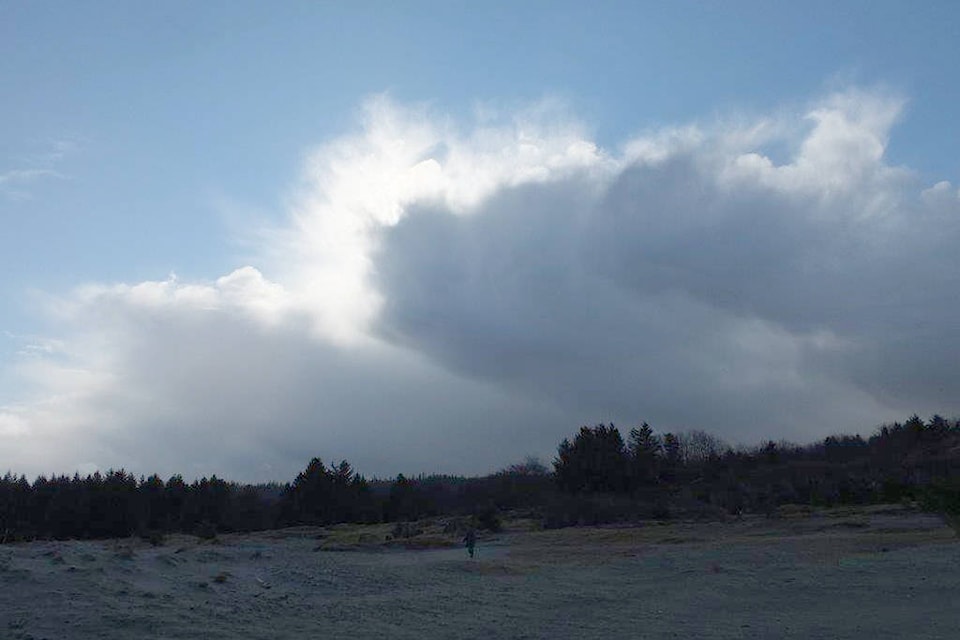By Margo Hearne
It’s a breezy morning and the March equinox is here. It’s often when the winds can’t seem to decide from which direction to blow. We can see the action from our vantage point out here in the middle of the Pacific. And we are vulnerable to every front that approaches; in fact, we can see them approaching. This week the skies looked like something from “Lord of the Rings” with lowering black clouds and wild grey and white streaks running through them as though the black was being whipped into a frenzy with a huge eggbeater. Lighter blue/grey skies came in from the east to bump up against them but the west winds won. After a major downpour the dark mass slipped south and here we are, under the southwest clouds.
It’s pretty dramatic stuff if you are into cloud-watching and it can determine our survival. Ancient mariners had to know how to read the weather when they travelled in huge canoes across the open Pacific Ocean to Hawaii long ago. Many left, not everyone returned. It was - still is - a risky business. A sense of wind speed and direction is important in order to succeed.
During migration birds need to have that sense as well. Robins are chirping on the fairway, Varied Thrushes have been singing for three weeks, juncos and wrens are caroling from the bushes around the house. We occasionally hear the little off-key Song Sparrow. They all have a sense of the wind and where it’s going to take them and they too don’t always survive. Many are on their way north from southern climes to set up for the next generation; it’s a long way in stormy weather. Some get exhausted and end up where they never intended to go - even landing on the Prince Rupert ferry to take a breather. They also fly alongside the ferry on the leeward side and low to the water to take advantage of the ferry’s bulk which can act as shelter, although it moves pretty fast and small birds can’t always keep up. But travel they must, its instinctive and essential. They’ve been in the world a lot longer than we have and know what needs to be done.
Many migrants land in Delkatla Wildlife Sanctuary. It too has been here for a while and has acted as a refuge for countless aeons. It was only in the late 1800’s that it began to shrink in size as settlers built homes and farms there. According to the big land promoter Charles Wilson it was the place to be. In 1911 he advertised in the ‘Prince Rupert Optimist’ “Delkatla is the LIVE WIRE of Graham Island…Masset Inlet will see many fine towns in a few years, but the GOLDEN KEY to them all will be Delkatla. The rush will soon be on us.” He set about dyking the Slough to reclaim land covered by tidal flats and expended a great deal of time and money on the project. But, as that wonderful historian Kathleen Dalzell wrote, “a raging storm came at the peak of a very high tide and washed the whole thing out in a matter of hours.” Wilson was not a weather-watcher.
